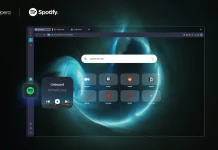HDMI has become the standard connection for modern smart TVs, providing both high-quality video and audio over a single cable. Most new QLED and OLED TVs offer at least two HDMI ports, with many models including three or four for connecting streaming devices, gaming consoles, and more. However, not every device people want to use relies on HDMI, and there are several other ways to connect your favorite gear to your smart TV for a fully personalized setup.
Non-HDMI Connections Overview
Before the era of HDMI, TV setups often involved a jumble of wires using RCA or coaxial connections. Even now, you might own devices that depend on these older connection types. Understanding available options ensures compatibility with everything from legacy home theater equipment to the latest wireless gadgets.
Soundbars and Headphones
Soundbars enhance your TV’s audio significantly, often connecting via a digital optical cable. This cable uses a distinctive square port and transmits a red light when active. Optical connections faithfully deliver audio — typically supporting up to 5.1 channels — but they don’t support advanced formats such as Dolby Atmos. For those, you’ll need an HDMI ARC (Audio Return Channel) port, which allows for higher-resolution audio codecs.
Another option is using a 3.5 mm auxiliary cable, suitable for both soundbars and headphones. While this method is straightforward and inexpensive, it only provides stereo sound. Many TVs also support Bluetooth, letting you pair wireless headphones for private listening without cumbersome cables.
External Storage Devices
Smart TVs commonly offer USB ports, which can be used to play media directly from flash drives or external SSDs. Most recent TVs handle popular formats such as MP4, AVI, MP3, AAC, JPEG, and PNG, letting you view videos, listen to music, or display photos. Plug-and-play compatibility is typical, but always ensure both your TV’s firmware and your storage device are updated for the best results.
Antennas, VCRs, and DVD Players
Older AV equipment like antennas, VCRs, and DVD players usually rely on coaxial or RCA connectors. While RCA ports are becoming rare on modern TVs, many still include a coaxial input, ideal for antennas. If you want to use an older VCR or DVD player, coaxial cables provide basic picture and sound, though quality may be limited. Some newer TVs support RCA input via dedicated adapters, making it easy to hook up legacy equipment without much hassle.
Laptops, Smartphones, and Tablets
While an HDMI cable is still a reliable choice, wireless streaming has become the preferred method for connecting laptops and mobile devices to smart TVs. Features like Apple AirPlay and Google Cast come built-in on many TVs, allowing you to mirror or stream content from your devices over Wi-Fi. For brands not supporting these standards, check for options like Miracast, which goes by names such as Smart View (Samsung) or Screen Share (LG). To ensure seamless connectivity, connect every device to the same home Wi-Fi and keep your software up to date.
By understanding both HDMI and alternative connection options, you can make the most of your smart TV’s capabilities and easily link legacy hardware, modern sound systems, and portable devices for an optimal audio-visual experience.





